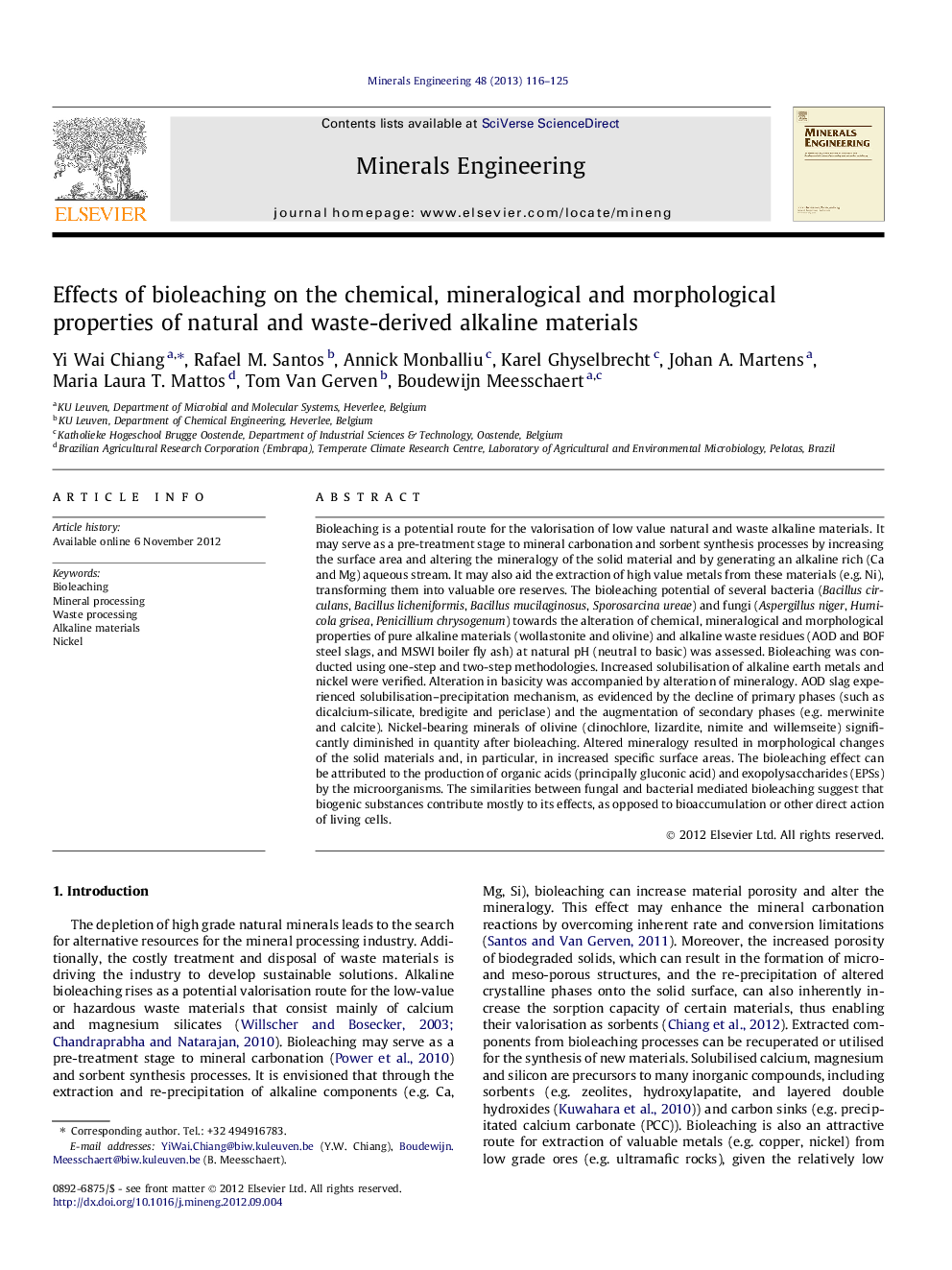| Article ID | Journal | Published Year | Pages | File Type |
|---|---|---|---|---|
| 233443 | Minerals Engineering | 2013 | 10 Pages |
Bioleaching is a potential route for the valorisation of low value natural and waste alkaline materials. It may serve as a pre-treatment stage to mineral carbonation and sorbent synthesis processes by increasing the surface area and altering the mineralogy of the solid material and by generating an alkaline rich (Ca and Mg) aqueous stream. It may also aid the extraction of high value metals from these materials (e.g. Ni), transforming them into valuable ore reserves. The bioleaching potential of several bacteria (Bacillus circulans, Bacillus licheniformis, Bacillus mucilaginosus, Sporosarcina ureae) and fungi (Aspergillus niger, Humicola grisea, Penicillium chrysogenum) towards the alteration of chemical, mineralogical and morphological properties of pure alkaline materials (wollastonite and olivine) and alkaline waste residues (AOD and BOF steel slags, and MSWI boiler fly ash) at natural pH (neutral to basic) was assessed. Bioleaching was conducted using one-step and two-step methodologies. Increased solubilisation of alkaline earth metals and nickel were verified. Alteration in basicity was accompanied by alteration of mineralogy. AOD slag experienced solubilisation–precipitation mechanism, as evidenced by the decline of primary phases (such as dicalcium-silicate, bredigite and periclase) and the augmentation of secondary phases (e.g. merwinite and calcite). Nickel-bearing minerals of olivine (clinochlore, lizardite, nimite and willemseite) significantly diminished in quantity after bioleaching. Altered mineralogy resulted in morphological changes of the solid materials and, in particular, in increased specific surface areas. The bioleaching effect can be attributed to the production of organic acids (principally gluconic acid) and exopolysaccharides (EPSs) by the microorganisms. The similarities between fungal and bacterial mediated bioleaching suggest that biogenic substances contribute mostly to its effects, as opposed to bioaccumulation or other direct action of living cells.
Graphical abstractFigure optionsDownload full-size imageDownload as PowerPoint slideHighlights► Bioleaching potential of seven bacteria and fungi towards five alkaline materials. ► Solubilisation of alkaline earth metals and nickel from AOD slag and olivine. ► Modification of mineral phases through dissolution and reprecipitation. ► Biodegradation leads to increased specific surface area and altered morphology. ► Microbial effects are linked to the generation of organic acids and EPS.
